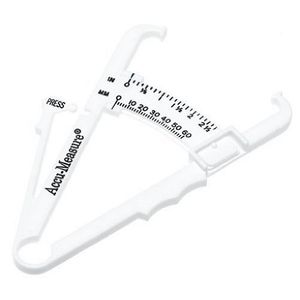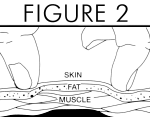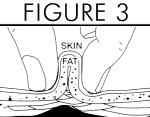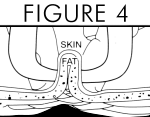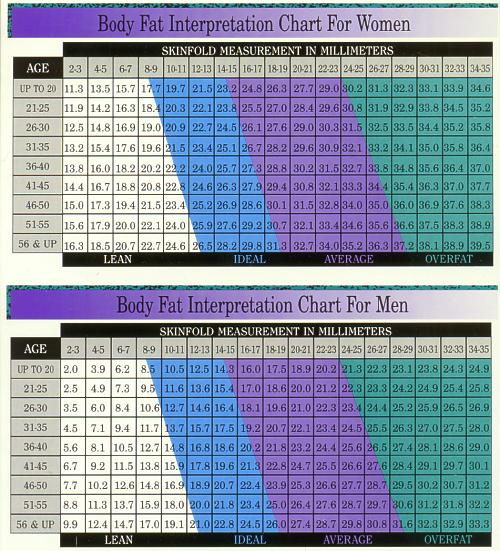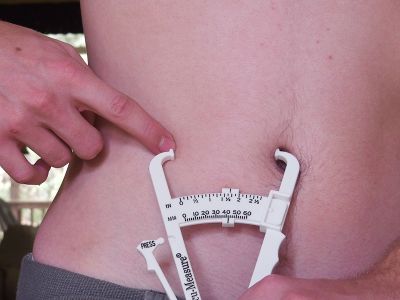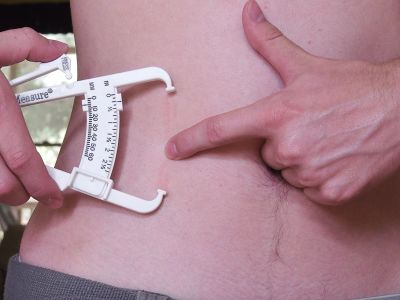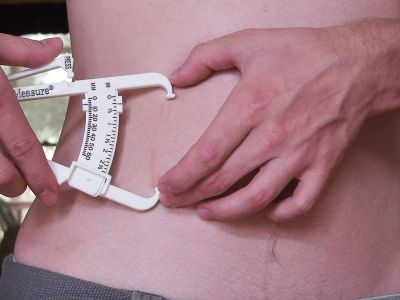Measuring your own body fat with cheap skinfold calipers
It is possible to use skinfold calipers to measure your own body fat on a regular basis, or to go to a specialist to have a periodic measurement taken. As with all techniques to measure body fat, skinfold calipers will only give an estimation of your body fat. Specialist testing can be more accurate than the self administered testing, but it more expensive and generally harder to do on a regular, frequent basis. Self administered testing is quick, cheap and can give a more direct measure of visible fat than other methods. Accu-Measure calipers at Amazon.com.
Contents
1 Self administered skinfold testing
There are various types of calipers on the market, but most of them are designed to be used by a second person on the subject to be measured. The Accu-Measure calipers are unusual in that they are designed for self testing, with a small slider on the scale that records the reading after the calipers have been released. They are remarkably cheap at only $5 from Amazon.com. The calipers have a 'click' that indicates when you've applied the right pressure to get a reading.
1.1 Taking the measurement
1.2 Accu-Measure single skinfold measurement
The simplest way of using calipers is to measure a particular spot on your body and monitor for changes. The Accu-Measure calipers recommend taking a single reading from the suprailliac, approximately one inch above the right hipbone, shown below.
This value is then looked up on a table to give a body fat percentage. A study[1] has shown that this technique is comparable to a professional 3 site skinfold test when compared with underwater weighing.
1.3 Fellrnr's single skinfold measurement
I've found that the suprailliac position less sensitive to changes in body fat than my abdominal skinfold thickness, as well as being tricky to ensure the same spot is measured each time. I therefore use the calipers themselves to find a spot 2.5 inches from my navel and measure there. Here are the steps
1.4 Multiple location measurement
Measuring multiple locations is tricky on your own body, but you can get a number of sites. A good guide to the standard locations is http://www.topendsports.com/testing/skinfold-sites.htm and an online calculator can be found at http://www.linear-software.com/online.html.
1.5 Downsides to the Accu-measure Calipers
There are some concerns with the calipers.
- A slight change in location of the measurement can make a big difference to the reading, so practice is required to get the same spot each time.
- The click tends to wear down over time, and different calipers require different pressure to 'click'. This difference in pressure can make a big difference in the skinfold measurement, so I'd recommend buying two or three.
- With lower levels of body fat, the resolution of the calipers is a problem.
- The calipers only measure the fat under the skin, and at a few locations. There is significant person to person variation in fat distribution through the body, limiting the accuracy even with expert usage.
2 Specialist skinfold testing
An expert can take your skinfold thickness at several sites and use these to estimate your body fat. The accuracy of this technique is not much greater than self administered testing, so I would not recommend this approach. Save your time and money for a BodPod or DEXA test.
3 References
- ↑ Validity of self-assessment techniques for estimating percent fat in men and women http://www.extremely-fit.com/downloads/bf-study.pdf
